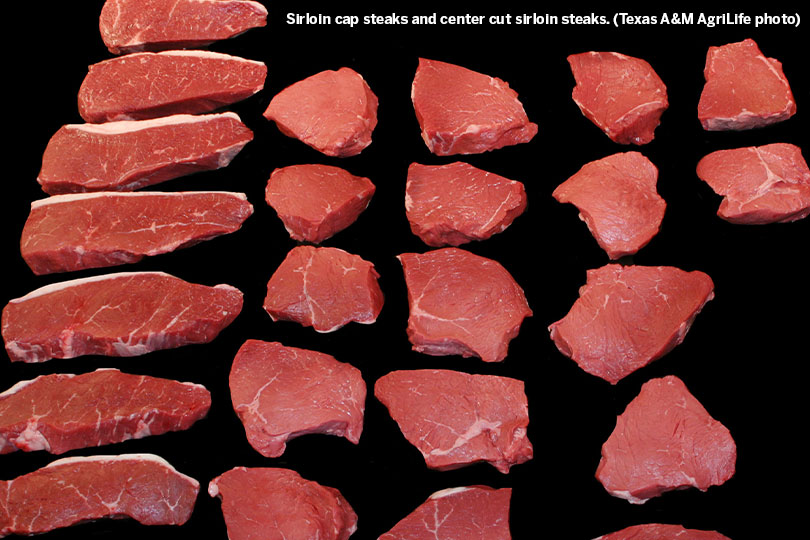By Jennifer Dorsett
Field Editor
In the throes of the COVID-19 pandemic, limited availability and fewer variety choices had many consumers trying new or different beef cuts. And while consumers may have been hesitant to purchase these new offerings at first, their value and flavorful eating experience may make these new cuts mainstays in the meat case of the future.
Newer retail cuts largely come from four primal cuts: the chuck roll, rib section, loin section and round, according to Davey Griffin, Texas A&M University AgriLife Extension meat specialist.
Breaking down a carcass results in about one-third trimmable fat and bone and another 20-25 percent trimmings for products like ground beef and pizza toppings. The middle meats, where higher-value cuts like steaks come from, make up 10-12 percent of the carcass, but account for nearly a full third of its value.
“The rest of it is the other muscles, and those are the ones we are trying to utilize more—enhance the value because they are the lower-cost muscles that still provide an excellent quality beef cut for consumers,” he said. “Enhancing the value of cuts from the chuck and round not only helps consumers have a great moderately priced eating experience, it also increases the overall value of the carcass. That also has potential to add to the value of live cattle.”
But it wasn’t just the pandemic that spurred the exploration of new muscle cuts.
Changing family sizes and consumers spending less time in the kitchen have been trending for more than a decade.
“We know these cuts are changing to meet the changes of consumers,” Griffin said. “They aren’t cooking a great big roast or porterhouse steak anymore.”
Now, the chuck is being processed differently, providing new cuts for different cooking and eating experiences. That’s providing more value to the beef industry.
“The second most tender muscle in the beef carcass comes from the chuck and is now being merchandized as a mid-priced flat iron steak,” he said. “It was just in a chuck roast. Now, we’ve pulled it out, and it’s a menu item at restaurants. It has enhanced the whole value of the carcass and provided the consumer an affordable eating experience.”
Other newer cuts include the petite shoulder tender, ranch steak, ribeye filet, ribeye cap steak and sirloin cap.
Griffin noted the ranch steak has a nutritional profile similar to that of boneless, skinless chicken breast.
In the past, retailers had difficulty marketing the newer cuts to consumers.
“Now, with newer customers trying new things, they are starting to get movement, and customers are having good experiences and are willing to try them again,” Griffin said.
Knowing where these newer cuts come from can help demystify the steps in processing, he said.
Cattle only have 13 ribs, which can be cut into several different retail and foodservice cuts. Chuck short ribs are less expensive than the ribs from the plate area but contain the same flavorful muscle.
“The chuck short ribs are used a lot for export, but they are otherwise cheap on the market because of the barbecue influence,” Griffin said. “But if you want to receive the plate short ribs, you can’t do a tomahawk steak. So, you have to pick one or the other out of a side of beef.”
Individuals who raise their own beef and take it to small processors might have to ask to get the different retail cuts.
And processors should be prepared for consumers to ask for those cuts at the meat counter.
“That’s how the consumer is eating today,” Griffin said. “The muscles haven’t changed, but we are using them in smaller, more utilizable pieces for the consumer.”

